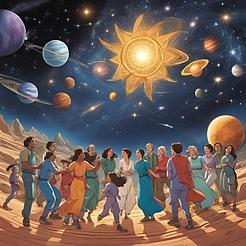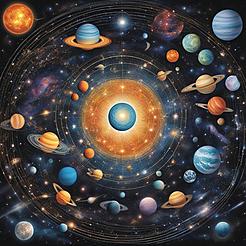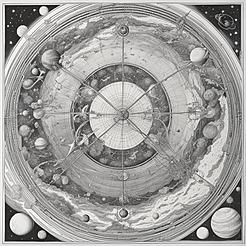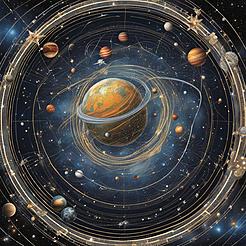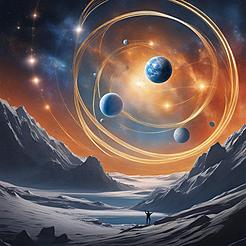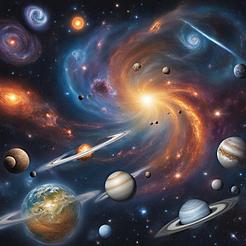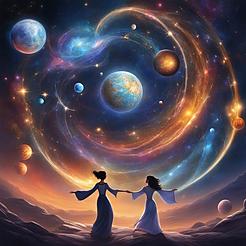 henrydjacob
henrydjacob- Chapter
- 2024-04-15

Picture the serene beauty of a planet orbiting its parent star, tracing an elegant path through the cosmic void. This graceful motion, known as orbital revolution, is a testament to the delicate balance between gravitational pull and centrifugal force. Each planet in our solar system performs this cosmic waltz, moving in harmonious synchrony with the celestial music of the universe.
But the dance of celestial bodies extends beyond planets to include their loyal companions – moons. Moons, those celestial companions that orbit planets, add an extra layer of complexity to the cosmic choreography. Just as planets revolve around stars, moons pirouette around their parent planets, creating a mesmerizing interplay of gravitational forces that shape their orbits and interactions.
One of the most iconic dances in the solar system is the intricate tango between Earth and its moon. The Moon, Earth's faithful companion, exerts a gravitational pull that causes tides to ebb and flow in a rhythmic dance across our planet's oceans. This celestial pas de deux has inspired poets, artists, and scientists alike, showcasing the profound influence of lunar gravity on Earth's dynamic processes.
Venture further into the outer reaches of our solar system, and you'll encounter the dynamic duo of Jupiter and its moon, Io. Io, the most volcanically active body in our solar system, showcases a breathtaking display of volcanic eruptions fueled by the gravitational tug-of-war between Jupiter and its other moons. This celestial spectacle serves as a vivid reminder of the intense forces at play in the cosmic dance of planets and moons.
The dance of planets and moons is not limited to our solar system alone. Across the vast expanse of space, exoplanets and their moons engage in a cosmic ballet of their own, each pair revealing a unique interplay of gravitational forces and orbital dynamics. Some moons, like Saturn's moon Titan, boast thick atmospheres and hydrocarbon lakes, offering a glimpse into the diverse landscapes that exist beyond our own cosmic backyard.
As we witness the captivating dance of planets and moons, we are reminded of the intricate web of interactions that govern the celestial realm. From the gravitational embrace between a planet and its moon to the complex resonances that shape their orbits, each celestial pair tells a story of cosmic harmony and gravitational unity.
In the grand cosmic symphony, planets and moons twirl and sway in a timeless ballet that transcends space and time. Their orbits and alignments create a celestial tapestry of unparalleled beauty, inviting us to marvel at the wonders of the universe and ponder the mysteries of gravitational forces that shape our cosmic neighborhood.
References:
- "Cosmos" by Carl Sagan
- "The Grand Design" by Stephen Hawking
- "Cosmos" by Carl Sagan
- "The Grand Design" by Stephen Hawking
